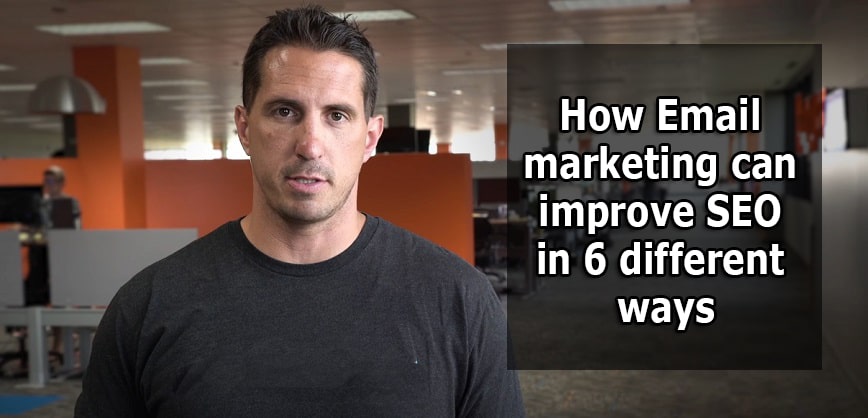As a marketer, you probably think about SEO in terms such as site links, search engine results pages (SERPs), and keyword research. However, have you given any thought to the ways in which email marketing might improve your success in SEO?
Emails sent for marketing purposes are not rated by search engines. The objective of any email campaign is often to increase the number of opens and click-throughs. Improving a website’s search engine optimization is never the main objective.
However, considering that 51% of people find new websites through email, it is worth looking into how you can leverage those visits. It’s not just for one-time click-throughs, but for high-quality traffic that increases your search engine rankings. This can be done by examining how you can convert those visits into leads.
Let’s take a look at a few of the advantages that come with creating emails with SEO in mind.
1. Email marketing can improves bounce rates
Search engines are aware of how long users typically remain on your website. They also analyze the proportion of users that quickly exit (also known as “bouncing”) without looking at any of your content. Your total search ranking is affected by a number of factors, one of which is your bounce rate. A high bounce rate will ruin your position. Even if the SEO writing on your website is written by the greatest SEO writers in the world.
The production of exceptional content is the first step in reducing your website’s bounce rate. You can really manage the quality of the visitors that come to your website by including a link to your content in email newsletters. Email links often lead to visitors who are more engaged. Also, they may be interested in the material you provide. This makes sense given that these visitors were interested enough in what you have to offer. They signed up for your emails in the first place.
2. Can boosts social involvement
Your most engaged visitors (subscribers) may be encouraged to share your material across their social networks. By sending them an email that contains links to share your content on social media your website’s traffic can improve. Include a call-to-action (CTA) that encourages users to share the new information. These devoted initial readers have the potential to help plant the seeds of virality. They can generate the vital organic engagement that is required.
Sharing content on social media has a direct bearing on search engine optimization (SEO). A research that was conducted by Cognitive SEO found that the top five most shared sites on Facebook, Linkedin, and Google+ were also the top five most highly rated pages.
3. Email marketing helps target content
Email segmentation and customer relationship management systems are quite helpful in situations like this one. You may send material directly to the people on your email list who are most likely to find value in it by using the demographic information that is included on that list.
And in today’s climate of contemporary email, this is more vital than it has ever been. More than 65 percent of marketers are currently making use of tailored email content.
You can ask your subscribers what they want using email polls and surveys. Also, design content around their requirements and interests, and then deliver that material in your email messages. You can do all of this with email polls and surveys. Due to segmentation, you can be more selective about the relevance of your content. It is important for search engine optimization (SEO) because relevance is one of the pillars.
4. Content hooks may be created via the use of email marketing
Email marketing is an excellent tool for encouraging people to read a post, and it is also an excellent one for disseminating any individual piece of material. Why not attempt to persuade the reader to interact with numerous pieces of material while you have their attention?
Make use of your email marketing efforts to cross-promote your other social media platforms by, for example, requesting that readers follow you on Twitter or subscribe to your YouTube channel. Your following will increase naturally as a result of these efforts, and you may end up being able to cross-promote even more of your material. Win-win.
5. Calls to action in email marketing may help enhance engagement
Email’s more personal character makes it a great spot for calls to action (CTAs), thus when it comes to comments and shares, all you need to do is ask for them by using an enticing CTA. In the future, you will be able to make advantage of segmentation in order to target the most active contributors within your comment feed.
The same is true for evaluations: Make a request by using a call to action. To make matters even better, include review forms and links to your Google Business reviews into your email communications. This is essential information for merchants and anybody else interested in pursuing local targeting. According to research conducted by MOZ in 2017, reviews have a 13% influence on the outcomes of local searches.
6. Email marketing can give content a second life
Your emails are lovely little pieces of content in their own right, packed with of value and information, so why not get as much mileage out of them as you possibly can? The inbox is merely the first step in the process. You may repurpose lengthy email threads or batches of shorter emails as blog pieces (which have a direct SEO benefit).
You may also post them in an archive on your website. This will allow users who do not have a subscription to read premium material that is often restricted to members. As a result, you may end up gaining some new subscribers as a result of this strategy.
Wrap up
Think of email marketing as a technique to link visitors of high quality with the content of your website that is also of high quality. Because search engines are growing better and better at identifying quality material and distinguishing it from other types of content, SEO is increasingly becoming a question of just publishing excellent content.
Email marketing puts your finest content in front of the greatest potential audience, and segmentation solutions remove the guesswork involved in determining who exactly makes up your audience. The objectives that you want to achieve with SEO should be taken into consideration when you implement your email strategies, and those strategies should be tailored to help you achieve those goals.



